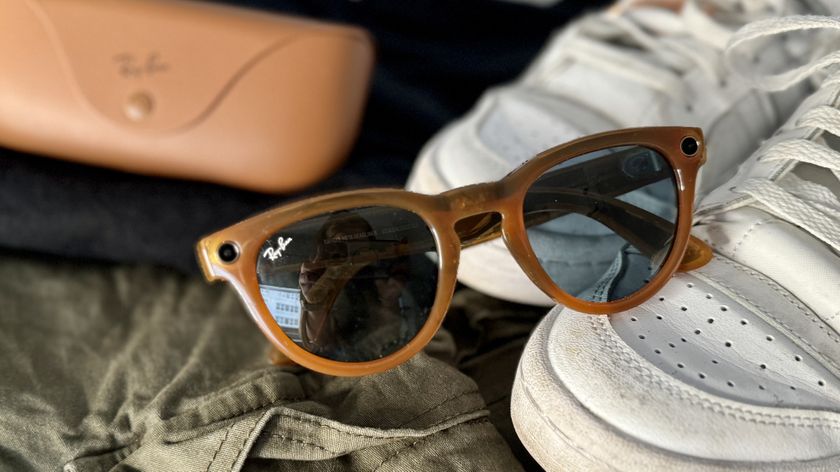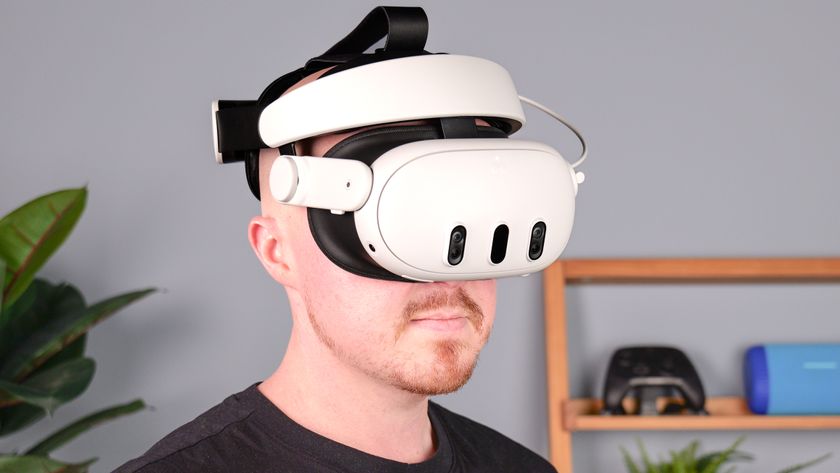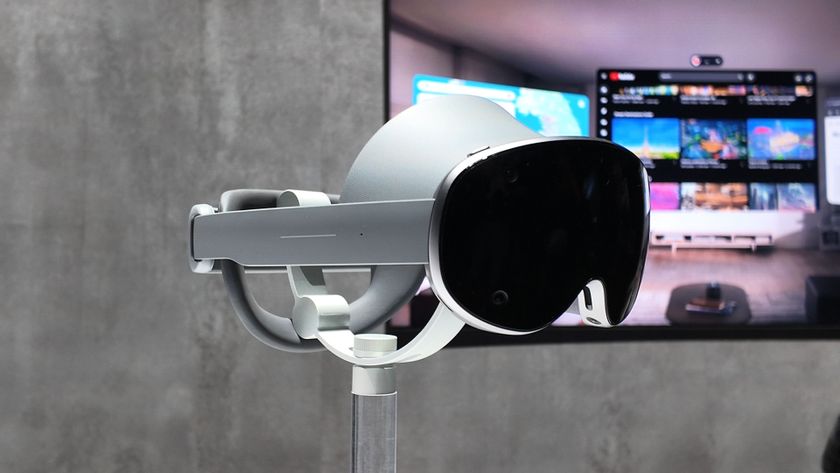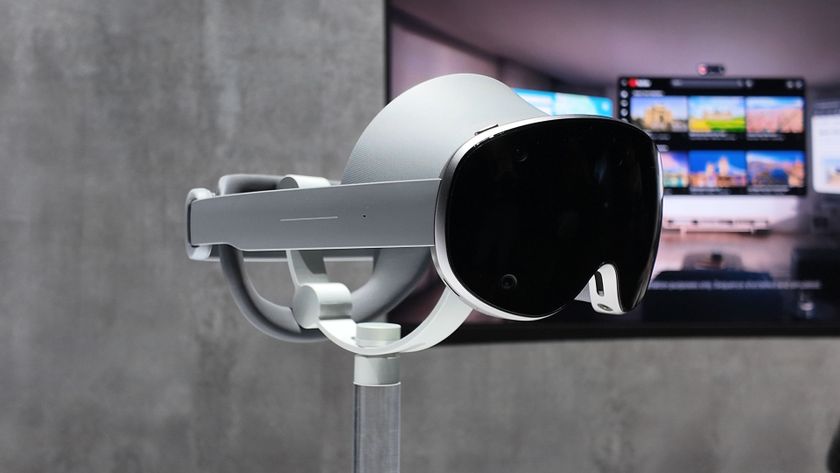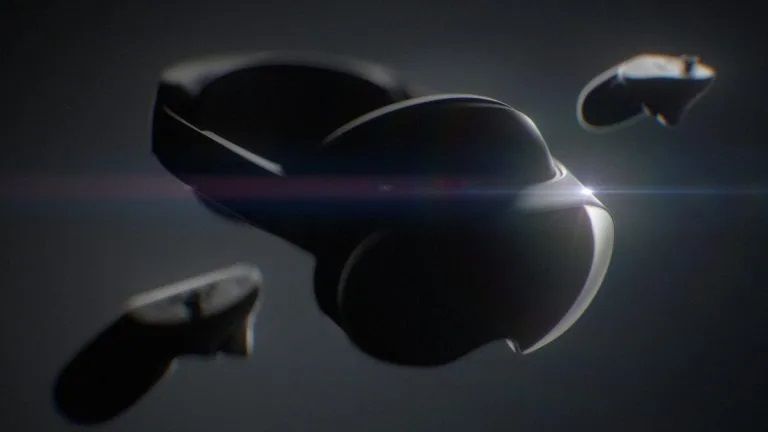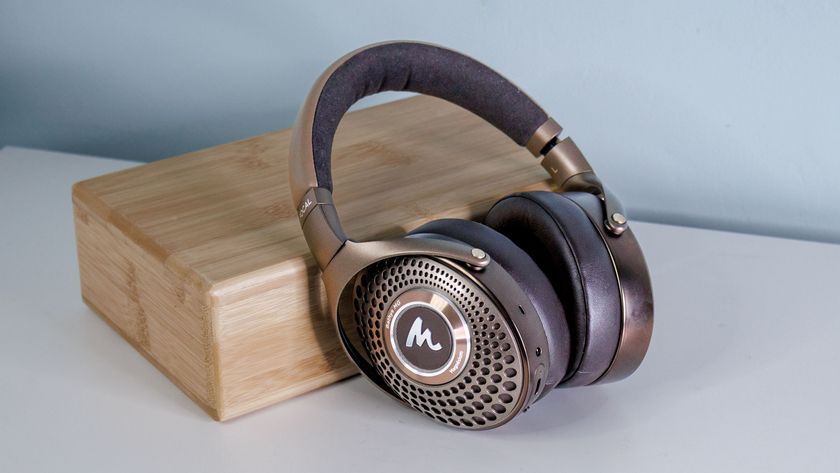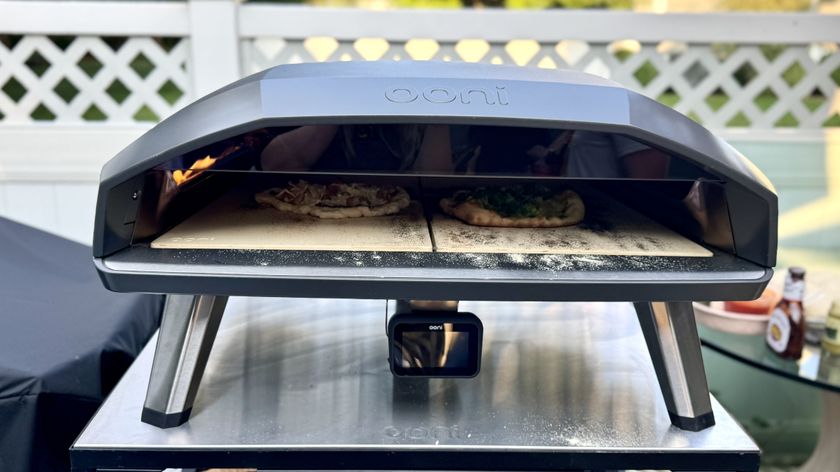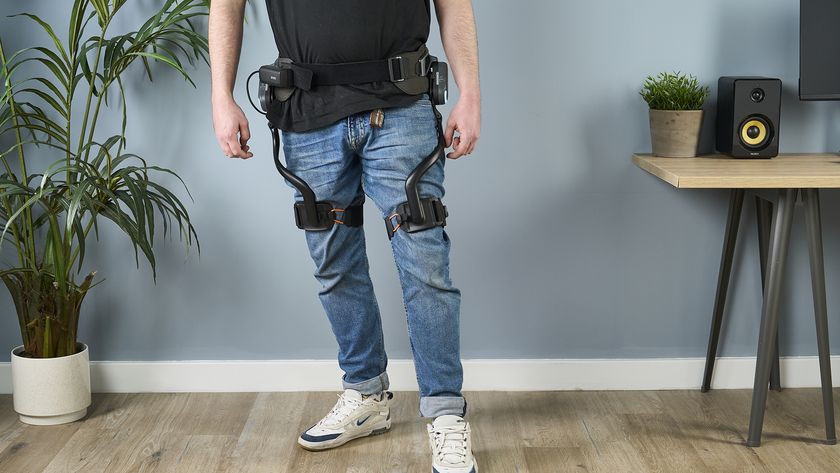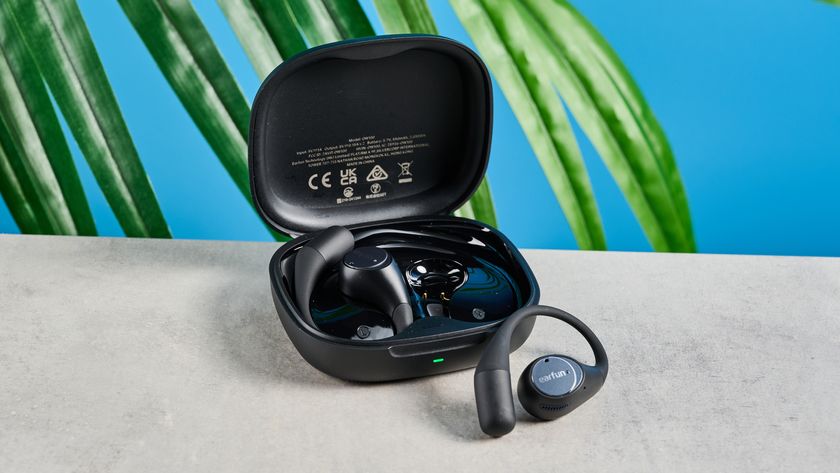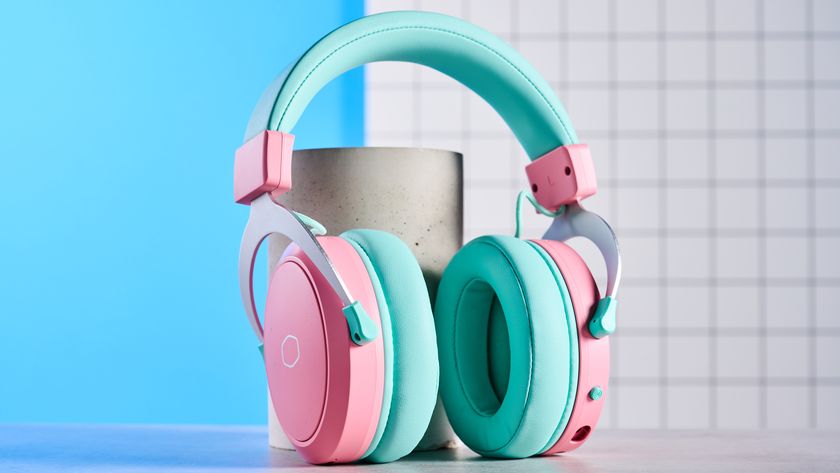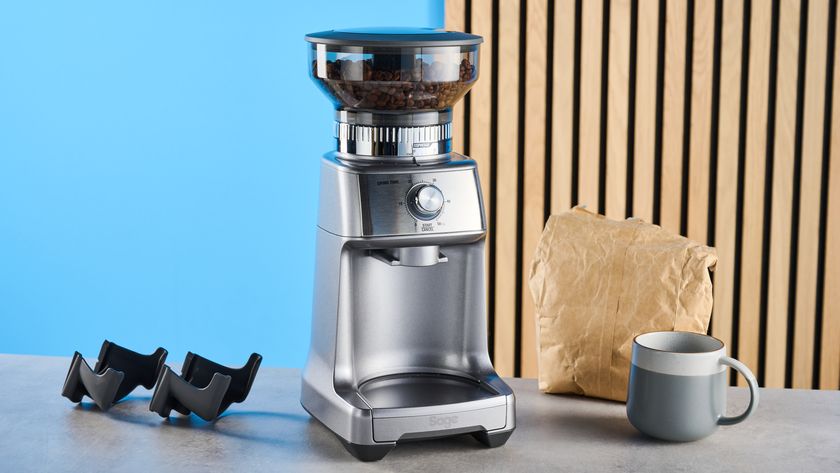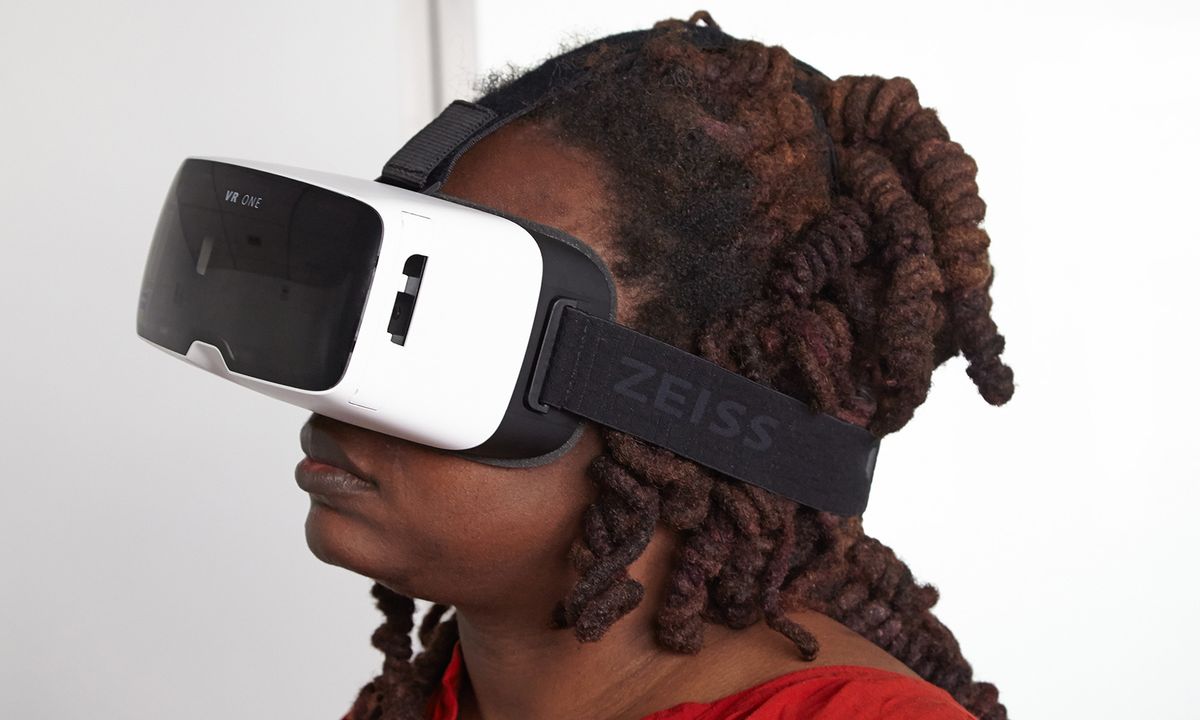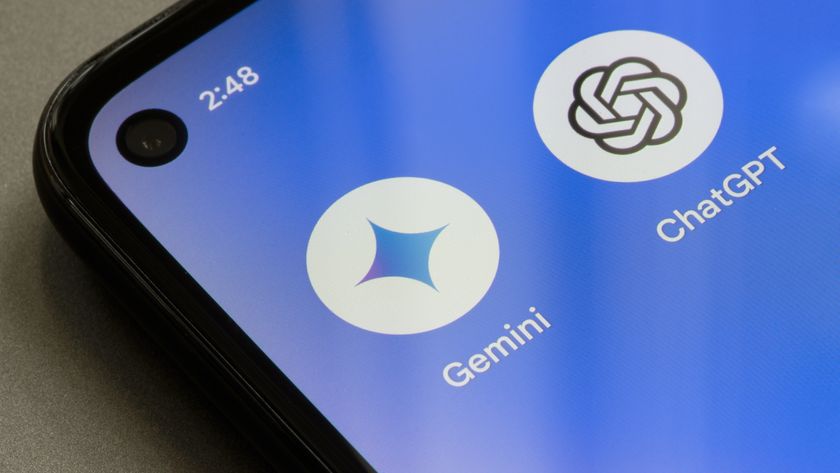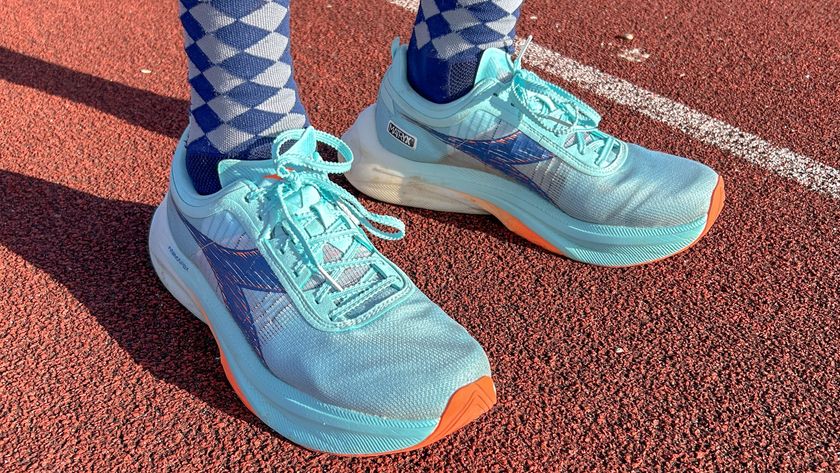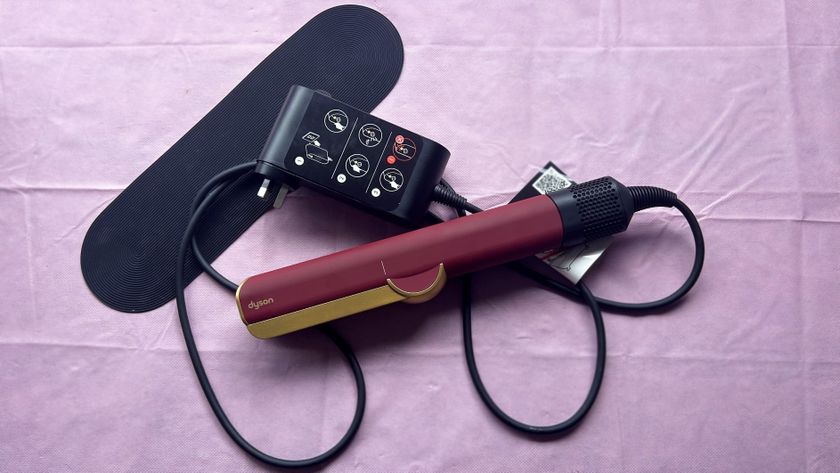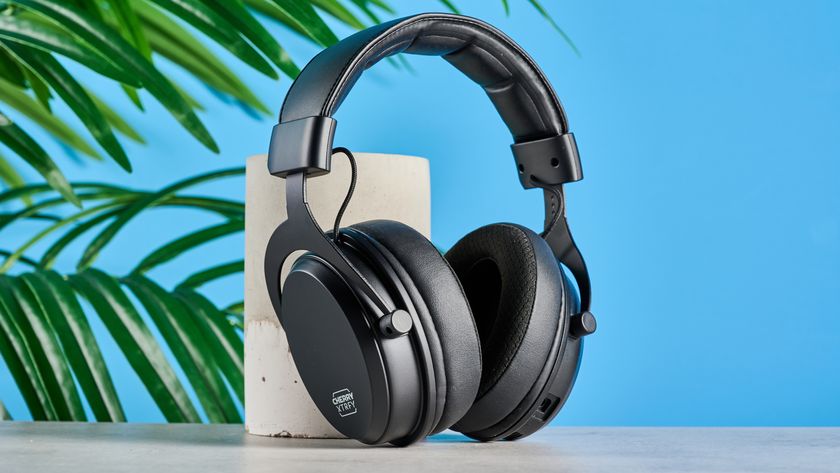Tom's Guide Verdict
The Zeiss One VR delivers AR and VR experiences for Android and iOS using high-precision lenses, but the controls and overall performance aren't up to par.
Pros
- +
High-precision lenses
- +
Augmented reality capabilities
- +
Android and iOS compatible
Cons
- -
Expensive
- -
Headset lacks control buttons
- -
Content can look really pixelated
Why you can trust Tom's Guide
Build a better Google Cardboard, and the world will beat a path to your door. That appears to be the thinking behind Zeiss' entry into the virtual reality space, the $120 VR One. This headset supports Android phones and the iPhone, and its high-resolution lenses may offer a glimpse into the future of VR, one where we'll be exploring virtual worlds in 4K resolution. But for now, the Zeiss VR One is hamstrung by content that's too low res to do the device justice.
Design
Let's be honest, the Zeiss One could pass for a Samsung Gear VR if you didn't know better. There are major differences that will make themselves apparent upon closer inspection, such as the permanently bolted-on faceplate with VR One printed on the center. The majority of the plastic headset has an eggshell-white tint compared to the Gear VR's alpine-white finish.
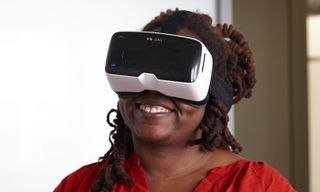
A sliver of the headset consists of black matte plastic, which has vents placed on the top and bottom to encourage air circulation and reduce potential sweating. Fasteners for the adjustable Velcro-lined bands are positioned at the top center and along the right and left sides of the device.
MORE: The Most Entertaining VR Headsets You Can Buy Now
Outside of the fasteners, the body of the Zeiss is relatively smooth, lacking any controls to interact with VR content. It's a decision that bites the headset in the ass almost immediately.

When I held the One side by side with the Gear VR, I quickly noticed how much boxier the Zeiss device was in comparison. Weighing 15.5 ounces, the Zeiss One is noticeably heftier than the 10.1 Gear VR.
One Slot Fits Some
The difference between the Zeiss One and Gear VR is the tray that slides in and out of the headset with an insistent push. Dislodging the tray from the headset revealed a space that was perfectly shaped to accommodate my Samsung Galaxy S6, including a cutout for my phone's rear camera. While the tray could fit my GS6, placing any other phone in the tray was difficult. But that's no accident.
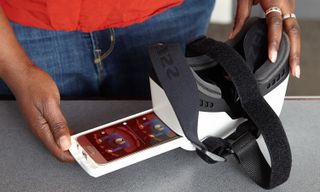
Zeiss has several different trays ($18.36 each) covering a number of phone makes and models, with display sizes between 4.7 and 5.5 inches, such as the iPhone 6 and 6s and the Sony Xperia Z5 Premium with 4K display. While the company has promised more trays, you can also 3D print your own for the using CAD data that can be found on Zeiss' website. You can print trays for the LG G3, Google Nexus 5, Samsung Galaxy S4, HTC One M8, Galaxy S6 Edge and the Sony Xperia Z3.
So why not just have adjustable panels like the Gear VR has? Zeiss claims that the trays allow for clear images at all times, even when the headset is not positioned correctly. The trays also make the headset glasses-friendly so the contact-lens adverse can use the device without placing something on their eyes. The company also touts the trays' built-in future proofing, which will presumably allow newer phones to be used in the Zeiss One with little-to-no fuss.
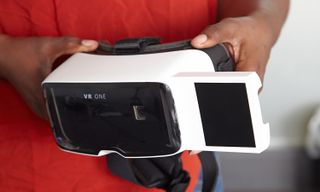
The trays perform as advertised but are a bit unwieldy, and there are moving parts that you have to keep track of compared to the Gear VR, which is a fairly self-contained system.
Comfort
Thank goodness for stretchy headbands. Despite my rather large hairstyle, the Zeiss One's headbands slid on pretty easily. It's a much easier process than with the Gear VR, which forced me to undo the top strap altogether. However, I still prefer wearing the Gear VR over long periods of time. With the Zeiss One, I started to feel slight pressure around my temples after about 45 minutes.
MORE: Augmented Reality Glasses: What You Can Buy Now
Interface
Similar to the Merge VR, the Zeiss One relies on Google Cardboard's interface, which isn't much to look at or use. You have to make your phone VR-ready before you can start using any of the apps or games you've downloaded. Thankfully, the process isn't too stressful once the Cardboard app is launched. You'll be prompted to scan a QR code to identify your headset. In the case of the Zeiss One, the code is located on the company website. Once the scan is complete, you'll be ready to go.
I was forced to remove my smartphone whenever I wanted to navigate outside of the tutorial.
Once the app was open, I ran into my first roadblock using the Zeiss One. In order to proceed past the initial launch page, I had to click on the Next button floating in front of me. There was an animated diagram signaling where I would find said button on the headset. Unfortunately, no such button exists on the Zeiss One's smooth-as-a-baby's-butt exterior. That left me two options: I could either slide the phone out of the headset and press it manually or scrounge around for a Bluetooth game controller.
I chose the latter option and paired my phone with my SteelSeries Stratus XL controller and tried again. This time, I accessed Cardboard's familiar interface with icons for Tutorial, Google Earth and Tour Guide, which takes you on a narrated tour of the Palace of Versailles. There's also the art-curation app dubbed Exhibit, along with My Videos, Photo Sphere (which displays photos taken with the Google camera app in 360 degrees) and Welcome Videos.
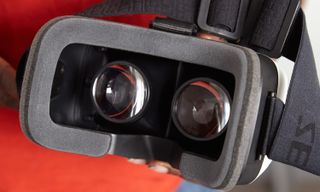
Despite having my trusty controller, I was still forced to remove my smartphone whenever I wanted to navigate outside of the tutorial. That meant I had to physically tap an app icon on my phone to begin the next VR experience. It's not Zeiss' fault necessarily as Cardboard lacks a unifying interface similar to what the Gear VR has. The interface, or lack thereof, doesn't make it easier to exit out of or launch apps.
Apps
Similar to the Merge VR headset, the Zeiss One makes use of the rapidly growing app store for Google Cardboard. I simply went to the Google Play Store, typed "virtual reality" in the search bar and started downloading Cardboard-compatible apps, such as Lamper VR, VR Roller Coaster and VR Mac-Pan, a virtual-reality rip-off of the 1980s arcade hero.
Once I downloaded a sizeable library, I perused my catalog using head movements to navigate. Selecting an app was as easy as looking at my choice for a few seconds.
A majority of the apps are free, but some, like VR Poltergeist Manor Cardboard, are priced at $1.99. Compare that to the Oculus-powered VR store, where apps, experiences and games can range from free to $29.99.
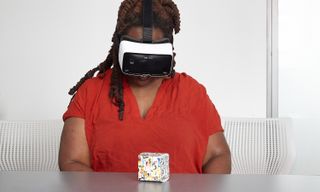
Zeiss does have a couple of its own apps, including VR One Cinema and VR One AR. As the name suggests, the Cinema app allows you to watch movies in videos in a virtual movie theater, similar to what you can do in the Gear VR Netflix app or the Oculus Video app.
Unlike Oculus Video, One Cinema doesn't allow you to choose your avatar or theater backdrop. As a result, I was a white guy seated in a theater that appeared to have been rendered back the days of PlayStation 2. However, the app allows you to watch mp4 movies previously downloaded to the app's folder (with the exception of copyrighted content from either the Google Play store or iTunes Store).
You can also view videos recorded on your phone, a feature I used to watch footage of a Turquoise Jeep concert I attended last year. The video, taken in a darkened Webster Hall room in New York, looked a fair bit sharper than it did on my smartphone display. I could see the slight creases in one of the performer's jeans as he enthusiastically danced across the stage.
There was also a lot of lag when I turned my head quickly to the right or left, which created nausea-inducing jaggies.
The headset also boasts augmented reality capabilities with the VR One AR app. Used in conjunction with a free cube shipped with the headset, the app shows off different characters and scenes depending on what side of the box you're viewing. The coolest vignette showed four smaller craft attacking a space station. The graphics weren't the best, but it was a fun example of the potential of augmented reality. Now, if only there were more augmented reality apps to play with.
Too Sharp for Its Own Good
Zeiss is world-renowned for its lenses, and that shows on this headset. This is too bad, because the headset, with its precision lenses, is far beyond any HMD currently on the market. The high-quality lenses managed to magnify every flaw in every virtual reality app, game or movie I launched.
The lenses are constructed from a high-density polycarbonate resin, which makes them very scratch-resistant. Aside from their durability, the lenses have been specially designed for "near to eye" content like virtual reality, nearly eliminating outer-edge distortion. The headset designers also increased the distance between the lens and pupil to ensure that people wearing eyeglasses don't have to remove the specs.
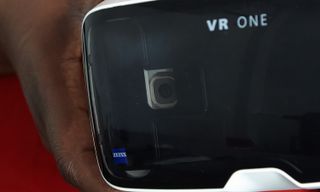
In the VR version of Google Earth, I saw the ruins of Machu Picchu with the Zeiss One, and I could easily make out the individual bricks in the majestic scene. I also saw almost every pixel in the scene, which took away from the overall immersion factor.
The same thing happened when I played Lamper VR, which looked even worse due to its cartoony art style. The same title on the Gear VR delivered a smoother experience. There was also a lot of lag when I turned my head quickly to the right or left, which created potentially nausea-inducing jaggies.
I felt just as queasy when I was trying to peg random kids with snowballs in Snow Strike VR, which didn't help with my aim. I had an easier time hitting my targets on the Gear VR's iteration of the title.
I would love to take the Zeiss One for another spin when 4K VR becomes available on smartphones that have better processing power. But based on where the technology currently stands, the Zeiss VR's lenses are too much of a good thing.
MORE: Best Gear VR Games
Battery Life and Heat
Similar to other mobile VR headsets, the Zeiss VR relies on your smartphone's display, processor and battery to power the experience. However, virtual reality content taxes those components more than watching a regular movie or playing a game does. After about 45 minutes, my Galaxy S6 had 78 percent battery life left.
Bottom Line
Priced at $120, the Zeiss One VR headset is a hard sell even to the most fervent of mobile VR aficionados. While the lenses are some of the best in the industry, it will be a while before there's any content that will look like more than a pixelated mess under their high-res grandeur. While I appreciate that the headset is iOS- and Android-friendly, the phone-specific cases are a bit clunky and add another $18 to the bottom line, driving the price up to $138.
The Merge VR accommodates Android and iOS devices in its squishy, anti-microbial, purple body and runs on Google Cardboard for a more reasonable $99. Ultimately, the Samsung Gear VR ($99) is still the king of mobile VR, offering a large game and app library with a clean, easy-to-navigate interface on a slick-looking piece of hardware. However, people who don't own the designated Samsung smartphones will be on the outside looking in.
Overall, the Zeiss One VR HMD is a solid headset for developers looking to create the first 4K virtual reality experiences. For the average consumer, I'd recommend the Merge VR if you don't have a Samsung phone.
Sherri L. Smith has been cranking out product reviews for Laptopmag.com since 2011. In that time, she's reviewed more than her share of laptops, tablets, smartphones and everything in between. The resident gamer and audio junkie, Sherri was previously a managing editor for Black Web 2.0 and contributed to BET.Com and Popgadget.
